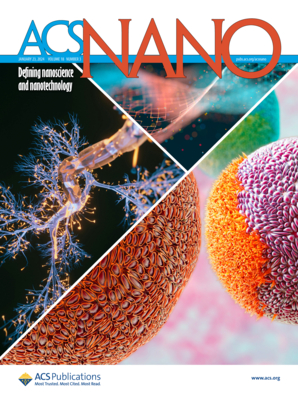A Metformin-Based Multifunctional Nanoplatform as a DNA Damage Amplifier for Maximized Radio-Immunotherapy to Overcome Radiotherapy Resistance
IF 15.8
1区 材料科学
Q1 CHEMISTRY, MULTIDISCIPLINARY
引用次数: 0
Abstract
Radiotherapy (RT) has been highlighted to be an effective strategy for antitumor immunity activation by causing direct DNA damages, but it generally suffers from low response rates due to the compromised cytosolic DNA (cDNA) recognition by cyclic GMP-AMP synthase (cGAS). Simultaneous DNA repair and clearance system regulation for enhanced cDNA accumulation is a useful approach to improve immune response rates, which remains seldom reported to our knowledge. Here, we report the construction of a metformin (MET)-based multifunctional nanocomplex, CS-MET/siTREX1 (CSMT), consisting of biguanide-decorated CS (CS-MET) as the vector and 3′-5′ DNA exonuclease TREX1 siRNA (siTREX1) as the therapeutic gene for RT-induced antitumor immunity enhancement by amplifying the initial DNA damage signals. The uniqueness of this study is the development of CSMT as a specific DNA damage amplifier to promote cDNA accumulation for maximizing radio-immunotherapy and circumventing RT resistance. Specifically, the CSMT nanocomplexes show not only enhanced gene transfection efficiency by MET modification but also synergistic therapeutic effects including MET’s inhibition on DNA repair and siTREX1’s attenuation on cDNA clearance, which leads to the greatest inhibitory effect in a Hepa1-6 proximal/distal tumor model with a high tumor growth inhibition (TGI) value of 99.1% for the primary tumor and significantly compromised distal tumor growth by inducing immunogenic cell death (ICD), promoting tumor-associated neutrophil (TAN) polarization, and stimulating tumor-specific memory T-cell generation. Overall, the CSMT nanocomplexes developed herein hold great translatable promises for overcoming RT resistance in clinics.

求助全文
约1分钟内获得全文
求助全文
来源期刊

ACS Nano
工程技术-材料科学:综合
CiteScore
26.00
自引率
4.10%
发文量
1627
审稿时长
1.7 months
期刊介绍:
ACS Nano, published monthly, serves as an international forum for comprehensive articles on nanoscience and nanotechnology research at the intersections of chemistry, biology, materials science, physics, and engineering. The journal fosters communication among scientists in these communities, facilitating collaboration, new research opportunities, and advancements through discoveries. ACS Nano covers synthesis, assembly, characterization, theory, and simulation of nanostructures, nanobiotechnology, nanofabrication, methods and tools for nanoscience and nanotechnology, and self- and directed-assembly. Alongside original research articles, it offers thorough reviews, perspectives on cutting-edge research, and discussions envisioning the future of nanoscience and nanotechnology.
 求助内容:
求助内容: 应助结果提醒方式:
应助结果提醒方式:


